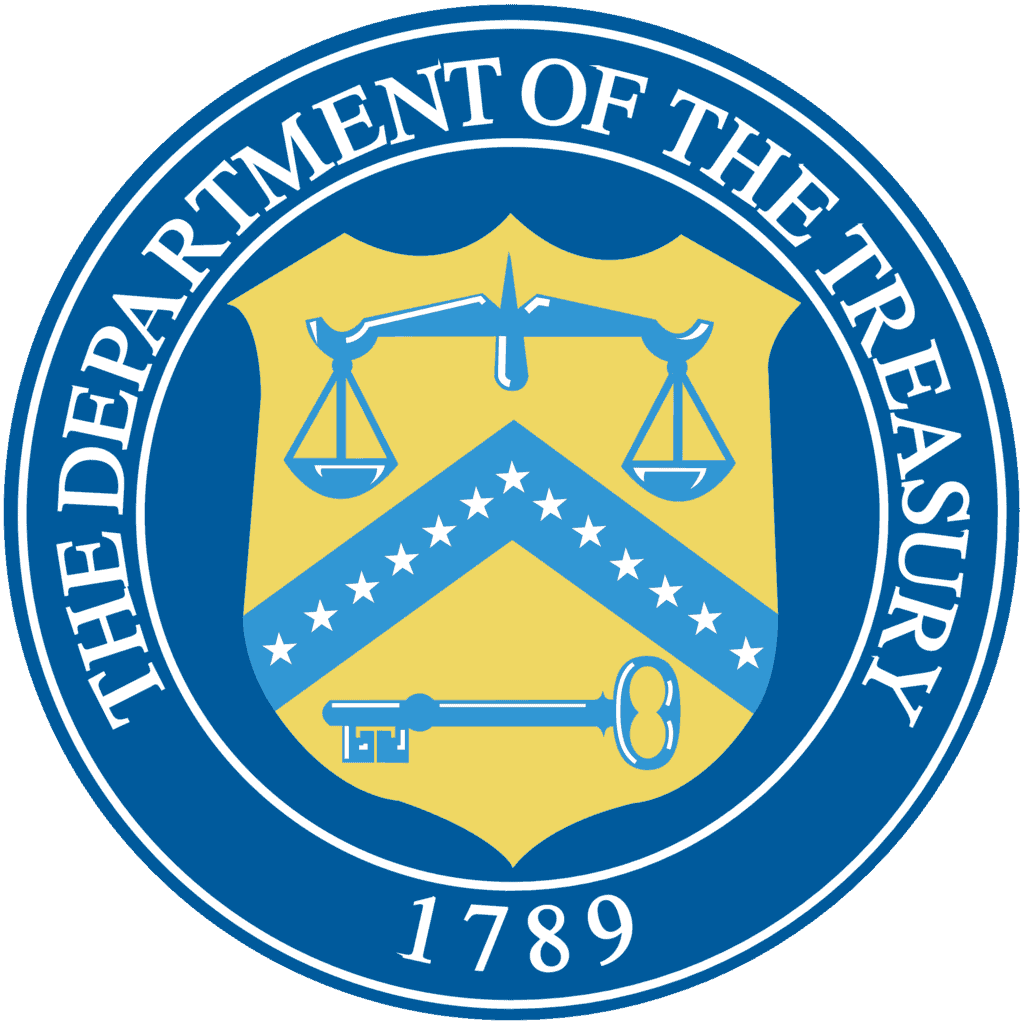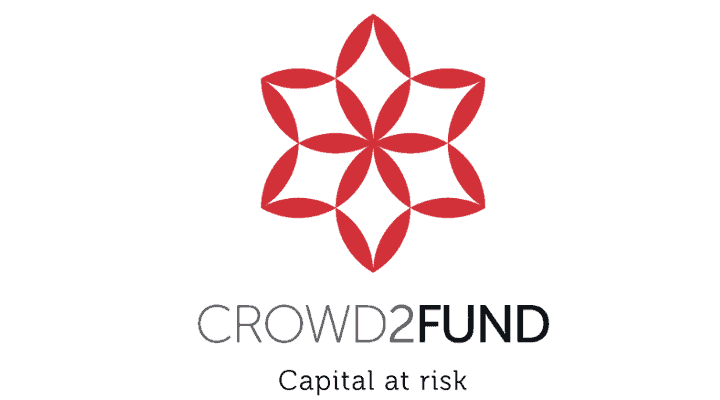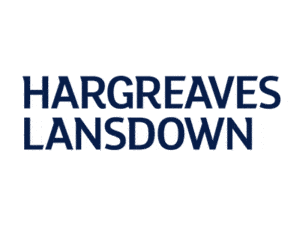How to Invest $1,000 – 15 Best Ways to Invest $1k in 2020
Are you currently sitting on $1,000 and not too sure what to do with it? Well, by letting it sit in a basic bank account, you’ll be lucky to make more than a percent in interest these days. On the contrary, by making some smart investments, you have the chance to grow your money over the course of time.
However, with so many investment opportunities available, it can be difficult knowing where to place your money. As such, we’ve listed 15 smart ways to invest $1,000 in 2019. Whether its bonds, crypto, ETFs, commodities, or property, we’ve got something covered for all risk levels.
If you’re instead looking to invest more than $1,000, why not check out our guide on how to invest $10,000? We’ve even covered how to invest $100,000.
1. Robo-advisors – Low-risk strategies aim for 5% per year
Robo-advisors are a new breed in the financial investment space. They essentially act as a virtual financial planner, building their investment strategies via artificial intelligence and machine learning. This means that you can obtain assistance on which investments to back, without needing to pay huge fees to traditional financial advisors.
How to invest in Robo-advisors?
If you’re keen to invest your $1,000 via a robo-advisor, then you might want to consider M1 Finance. With more than 25,000 users and over $100 million in client funds, M1 Finance is an industry leader in the Robo-advisor space. One of the main attractions is that the platform does not charge any fees or commissions, and you can get started with an investment of just $100.
Step 1: Register an account with M1 Finance by providing a range of personal information
Step 2: Answer some questions regarding your financial circumstances (net worth, risk tolerance, etc.)
Step 3: Choose which account type you want (individual, joint brokerage, retirement or trust account)
Step 4: Deposit some funds
Step 5: Set-up your robo-advisor parameters (risk levels, auto-invest, etc)
Step 6: If you like the strategies that the robo-advisor suggests, then choose how much you want to invest
Pros and cons of investing in robo-advisors
Pros:
- Some platforms do not charge fees or commission
- Minimum deposit of just $100
- Choose your robo-advisor risk levels
- Allow the robo-advisor to invest on your behalf
Cons:
- Robo-advisor only as good as the underlying technology
2. StashApp – Aim for 5% per year by diversifying your risk
If you’ve got $1,000 to invest, but you want to start with really small amounts, then we would suggest looking at StashApp. The platform allows you to invest in hundreds of stocks, funds, and bonds, essentially allowing you to build your own portfolio. The key selling point to StashApp is that you can get started with just $5. Once you start to get more comfortable, you can begin to increase your exposure.
How to invest with StashApp?
As the name suggests, you will need to download the native mobile app to get started with StashApp. It’s available to download free of charge on both Android and iOS devices.
Step 1: Head over to the Google Play or iTunes Store and download the StashApp application to your phone
Step 2: Open an account
Step 3: Provide your social security number and verify your identity
Step 4: Deposit some funds
Step 5: Browse the vast range of stocks, bonds, and fund available
Step 6: When you’ve chosen an asset to invest in, choose how much you want to invest and complete your trade.
Pros and cons of investing with StashApp
Pros:
- Start with just $5
- Perfect for beginners
- Hundreds of investments to choose from
- Accepts multiple payment methods
Cons:
- Does not offer robo-advisor services, so you will need to pick your own investments
3. Stocks and Shares – Up to 10% per year
The stock market is an excellent way to increase your $1,000 over time. There are literally tens of thousands of companies that are now publically listed, which is great if you’re looking to diversify. When you buy stocks and shares, you’ll be looking to make money via two key methods. Firstly, you’ll hope that the price of your shares will increase over time, and when you decide to sell them, it will be for a higher price than you originally paid. Secondly, a lot of companies pay dividends. This is where companies share some of their profits with shareholders, and this is usually between 2-4% every year.
4. U.S. Treasury Bonds (T-Bills) – Around 1-2% per year
If you want to invest your $1,000 into one of the safest markets in the world, then you should consider buying some U.S. Treasury bonds. This is where you lend money to the U.S. government, and in return, they will pay you interest. When the bonds expire, you then receive your original $1,000 investment back in full. You can buy U.S. Treasury bonds, or simply “T-Bills”, both short-term and long-term. In fact, T-Bills can be purchased on a 3-month basis, all the way up to 100-years! In terms of risk, the only way you would lose your investment is if the U.S. government collapsed, which in reality, is never going to happen.
How to buy U.S. Treasury Bonds?
One of the best things about buying U.S. Treasury bonds is that you can buy them directly from the U.S. Treasury Office. This makes it super easy, not least because you don't need to pay any broker fees. Furthermore, your bond interest payments will be deposited straight into your Treasury Office account. When the bonds expire, you can withdraw the entire balance back to your bank account.
Step 1: Register your details at the U.S. Treasury Office website
Step 2: You will need to verify your identity. Have your social security number at hand, too.
Step 3: Decide what period you want to hold the bonds for (3-months to 10 years is best)
Step 4: Follow the on-screen instructions to pay for your bonds
Step 5: Your interest payments will be paid at the end of each year, until the bonds expire.
Pros and cons of investing in U.S. Treasury Bonds
Pros:
- One of, if not the safest investment vehicle
- Earn regular, fixed interest payments
- Receive your investment back at the end of the term
- No need to use a broker
Cons:
- Yields are much lower in comparison to other investment opportunities
- You can’t get your money out until the bonds expire.
5. Cryptocurrencies – Jan 2019 – May 2019 – Bitcoin +122%
If you have a higher appetite for risk, then cryptocurrencies could be a good destination for your $1,000 investment. Cryptocurrencies such as Bitcoin are highly volatile, however, on the other hand, they offer opportunities to make big gains in a small period of time. For example, while Bitcoin was worth less than 1 cent in 2009, the cryptocurrency hit almost $20,000 in late 2017. There are now more than 2,000 different cryptocurrencies to choose from, meaning that you can diversify your holdings. Other notable cryptocurrencies include Ethereum and Bitcoin Cash.
[/su_note]
6. Real Estate – 5-15% per year (rent and appreciation)
Real estate is not only one of the safest assets out there, but it also yields some highly lucrative returns. Although you won’t be able to buy a house with your $1,000 investment, did you know that you can now buy a fraction of a property? Known as crowdfunding, companies such as PropertyPartner allow you to buy shares in a property, meaning that you will be accustomed to both monthly rental payments, as well as appreciation gains.
How to invest in real estate with $1,000?
If you want exposure to the real estate industry, but you’ve only got $1,000, then you’ll be best using a crowdfunding platform like PropertyPartner. You’ll pay just 2% in fees when you make an investment, however, it is highly likely that you’ll make this back within the first year – both in the form of rental yield and appreciation.
Step 1: Open an account with Property Partner
Step 2: Verify your identity (upload a copy of your government issued ID)
Step 3: Choose the property that you want to invest in
Step 4: Enter the amount that you want to invest
Step 5: Enter your debit/credit card details
Step 6: Complete your purchase
Pros and cons of investing in real estate
Pros:
- Safe and secure asset that stands the test of time
- Earn monthly rental yield
- Earn capital gains as the value of the property increases
- Choose which housing market you want to invest in
Cons:
- Usually not suitable as a short-term investment
7. Peer-to-Peer Lending – 4-7% per year
Although peer-to-peer lending is a rather new investment class, the phenomenon appears to be hugely popular with low-level investors. As such, it’s perfect if you only want to invest $1,000. The way peer-to-peer lending works is you loan-out money to another person, and in return, you earn interest. Therefore, you are essentially performing the role of a bank. Interest yields average 4-7%, depending on the credit rating of the person you are lending money to.
How to invest in peer-to-peer lending?
If you like the sounds of peer-to-peer lending, then we would suggest looking at LendingClub. The platform is a market leader in the peer-to-peer lending space, and even better, they allow you to get started with just $1,000. You also have the option of diversifying your risk, by loaning money to multiple people. This way, if one person defaults, you won’t feel the effects as much.
Step 1: Open an account with LendingClub
Step 2: Answer some questions to ensure you are eligible to lend-out money
Step 3: Verify your identity
Step 4: Browse the many different loans on offer. Each option will have a risk level attached to it and a fixed yield
Step 5: Once you’ve decided which loans you want to back, deposit some funds
Step 6: Complete your investment
Pros and cons of investing in peer-to-peer lending
Pros:
- Perform the role of a traditional lender by earning interest on your loaned-out money
- Interest payments of 5-7% per year
- Start with just $1,000
- Diversify by investing in multiple loans
Cons:
- There is no guarantee that the loanee will not default on payment
8. ETFs – Up to 10% per year
Exchange Traded Funds, or simply “ETFs”, allow you to track an asset or group of assets. For example, instead of buying shares in the top 500 U.S. stocks individually, you can simply invest in the S&P 500 ETF in a single trade. ETFs can be purchased in virtually any sector, including but not limited to stock markets, commodities, real estate, and even marijuana!
Pros and cons of investing in ETFs
Pros:
- Hundreds of different markets to invest in
- Invest in hundreds of assets in just a single investment
- Perfect for small-time investors
- You can also speculate on the ETF losing value
Cons:
- ETFs do not pay dividends or interest payments
9. Invest in a New Business Startup – Up to 15%
Imagine having had the chance to invest in Apple when Steve Jobs was still operating out of his garage? Well, although this might sound a bit extreme, you might want to consider investing your $1,000 into a new business startup. Although you might not see any returns for some time, if the company does become highly successful, your gains are likely to follow suit. Other opportunities lie in loaning money to new and exciting startups.
How to invest in a new business startup?
If you’re only looking to invest $1,000 into a new business startup, then you’ll need to use a well-known crowdfunding platform. This means that your stake in the company will be proportionate to the amount you invest. One of the leading crowdfunding platforms in this respect is Crowd2Fund, who allow you to back small British businesses that need help with funding. The platform claims that annual returns can amount to up to 15%.
Step 1: Open an account with Crowd2Fund
Step 2: Deposit some funds by using a debit/credit card
Step 3: Take some time to scroll through the many different small businesses that require help with funding
Step 4: Choose how much you want to invest (minimum is £10, so USD equivilent)
Step 5: Confirm the investment
Pros and cons of investing in small business startups
Pros:
- High returns if the company is successful
- Lots of different industries to choose from
- Crowdfunding allows you to invest really small amounts
Cons:
- Much higher risk than real estate crowdfunding
10. Commodities – Depends on commodity – 5-15% per year
The commodity investment space is a multi-trillion dollar arena. Commodities refer to physical assets such as gold, wheat, diamonds, silver, and oil. Although commodities don’t pay dividends or interest payments, they are viewed as a store of value against turbelent financial markets.
Pros and cons of investing in commodities
Pros:
- Good way to invest in a store of value
- Some commodities increase in value when the stock markets go down
- Diversify by buying lots of different commodities
Cons:
- Volatility is a lot higher than the stock market
11. Savings Bonds – 1-3% per year
Savings bonds are of a similar nature to savings accounts, however, the interest payments on offer are much higher. You are essentially lending money to a bank or building a society, who in return, will pay you regular interest payments. Expect to earn between 1-3% per year. Very low risk, especially if investing with an established financial institution.
How to invest in Savings Bonds?
Once you’ve decided which savings bonds you want to invest in, you will need to open an account with the respective bank or building society, and then transfer funds across. You’ll receive regular interest payments (quarterly or annually), and then your original investment back once the bonds mature. An attractive savings bond currently available is that of QIB (UK), who are offering 2.05% interest for just a 1-year term.
Step 1: Open an account with QIB (UK)
Step 2: As QUB (UK) is a financial institution, you’ll need to verify your identity
Step 3: Decide how many bonds you want to buy, and then transfer the funds across via bank transfer
Step 4: At the end of the 1-year term, you can withdraw your investment (plus interest payments) back to your bank account
Pros and cons of investing in savings bonds
Pros:
- Very safe investment
- If investing with a UK institution, likely to be protected by FSCS protection (up to £85,000)
- Bond periods usually start from just 1-year
Cons:
- Interest yields are fairly low
- Unable to withdraw money out until bonds mature
12. Mutual Funds – Aim for 10%+
If you want to invest $1,000 into the financial markets, but you want somebody else to manage your funds on your behalf, then you should consider a mutual fund. An experienced fund manager will buy and sell investments on your behalf, for a small annual fee.
How to invest in mutual funds?
The easiest way to invest your $1,000 into a mutual fund is via an online broker. Hargreaves Lansdown, for example, allows you to choose from dozens of leading mutual funds. The platform charges an annual fee of 0.45%, which is good value, as you won’t need to choose the investments yourself.
Step 1: Open an account with Hargreaves Lansdown
Step 2: Deposit funds using a debit or credit card
Step 3: Head over to the funds section and decide which mutual fund you want to invest in
Step 4: Enter the amount you want to buy, and complete the trade
Step 5: You will receive dividends directly into your Hargreaves Lansdown account
Step 6: You can cash out your $1,000 investment at any time
Pros and cons of investing in mutual funds
Pros:
- Allow an experienced investor to invest on your behalf
- Mutual funds will diversify across multiple assets/companies
- Fees are low
- Cashout your investment at any time
- You still receive dividends, if applicable
Cons:
- Unable to choose your own investments
13. Help Fund Property Developers – 8-12% per year
If you want to invest $1,000 into the real estate industry, but you don’t want to have your funds tied up long-term, then you should consider investing in property developers. These are companies responsible for building real estate, who subsequently need cash to help fund projects. By loaning money to the property developers themselves via crowdfunding, you can expect to make between 8-12% in annual interest.
How to invest in property developers?
The leading property development funding platform is the Property Crowd. You can choose from a number of different projects to back, each with their own yield and loan period.
Step 1: Open an account with the Property Crowd
Step 2: Deposit funds using a debit or credit card
Step 3: Spend some time looking at the different projects that need funding
Step 4: Choose how much you want to invest in your chosen project
Step 5: At the end of the term, withdraw your original investment (and interest payments) back to your bank account
Pros and cons of investing in property developers
Pros:
- High annual yields on offer
- Diversify across multiple projects
- Gain exposure to real estate without needing to have your money tied up long term.
Cons:
- Your funds are at risk if the property developetfer runs into financial trouble
14. Penny Stocks – Make or lose 20%+ in a year
If you want to invest your $1,000 into a high-risk, high-return marketplace, then you might want to consider penny stocks. These stocks are generally issued by really small companies with low liquidity levels. As such, the marketplace is extremely volatile. While on the one hand returns can be huge, as can the losses. If you do invest in penny stocks, make sure you diversify by holding multiple stocks.
Pros and cons of investing in penny stocks
Pros:
- Perfect for those with a strong appetite for risk
- Thousands of penny stocks to choose from
- Chance to make massive gains
Cons:
- Ultra high-risk asset class
- You could lose a significant proportion of your portfolio
15. The Legal Marijuana Industry – Aim for 5% per year
With dozens of countries of legalizing medical marijuana, and the likes of Canada, Uruguay and 9 U.S. states legalizing it recreationally, the marijuana industry could be a really wise investment. Although the legal side of the industry is still in its infancy, you can still make an investment with ease. You have the choice of backing established Marijuana companies (such as growers), or instead, investing in an ETF.
Pros and cons of investing in the legal marijuana industry
Pros:
- Excellent time to enter the market as more and more countries relax laws
- Choose from a range of marijuana-based stocks
- Marijuana ETFs are also available
Cons:
- Industry reliant on government legislation
5 things to keep in mind before investing your $1,000
Before you invest your $1,000, it is important that you have a full understanding of how each investment works, how much you hope to make, as well as the underlying risks. We've presented five things that you should keep in mind before investing your $1,000.
1. How long are you willing to wait to see results?
Before you invest your $1,000, you need to think about how long you are prepared to hold on to your investment. For example, if you invest in bonds with a 5-year term, then you should know that you won't be able to touch the funds until the bonds mature (after 5-years). If you can only afford to lock your money up for a year, then you might need to consider a short-term investment (such as crypto or peer-to-peer lending).
2. How much risk are you willing to take?
Each investment will have its own risk-vs-reward levels to consider. The higher the risk, the higher the returns should be. If you only want to invest in a super low-risk asset, then you might want to stick with bonds (such as U.S. Treasuries). Alternatively, if you want to invest in a high-risk asset, then you're best suited for crypto or penny stocks.
3. How much money would you be happy to walk away with?
If you're going to risk your $1,000, you need to assess how much money you would be happy making. If you invest in bonds that pay just 2%, then you need to evaluate whether it's worth the investment. However, if you do want to make bigger returns, then be sure that you understand the higher risks attached to the investment.
4. Do you know enough to be able to invest?
Knowledge is everything in the investment space. While we strive to provide you with the groundwork to begin your investment journey, you still need to perform your own research. This is also the case for robo-advisor platforms, as you need to ensure that the underlying technology is advanced enough to outperform the market.
5. Are you ready to deal with the emotional highs and lows of investing?
Unless you are investing in fixed-rate assets such as bonds or peer-to-peer lending, then you need to be emotionally prepared for the ups and downs of the financial markets. For example, stocks and shares will always experience highs and lows, so you need to accept that some trades might not go in your favor. Some traders are not able to handle losses, but this is something that most of us will experience at some point in our investment journey.
See Our Full Range Of Investment Resources - Investments A-Z












